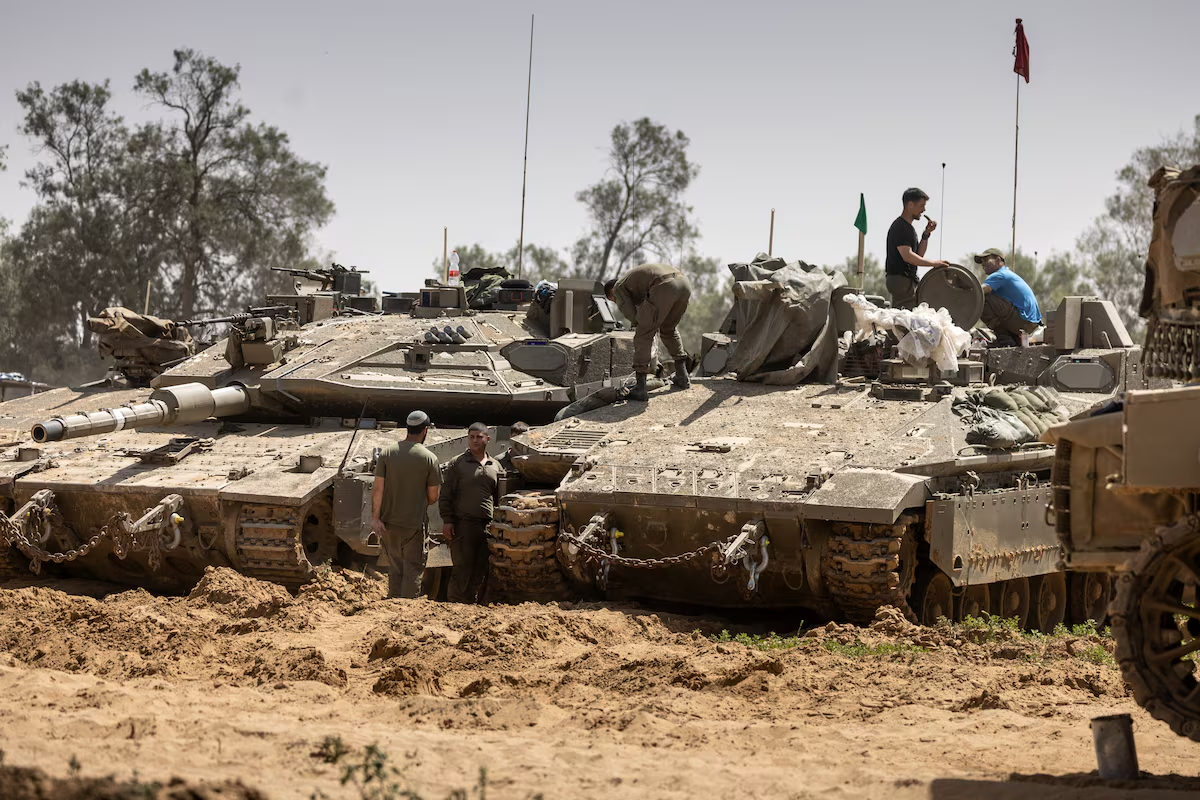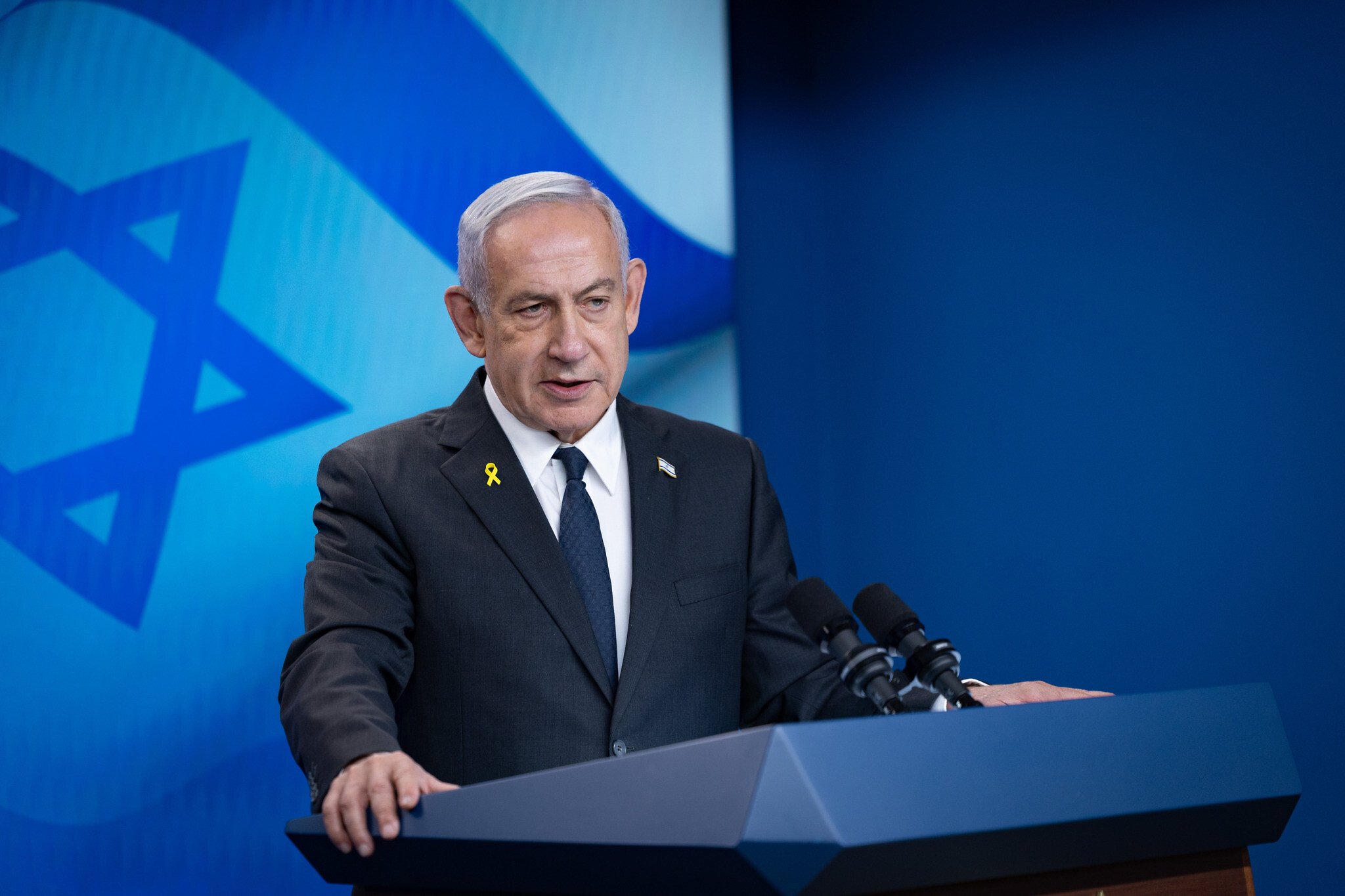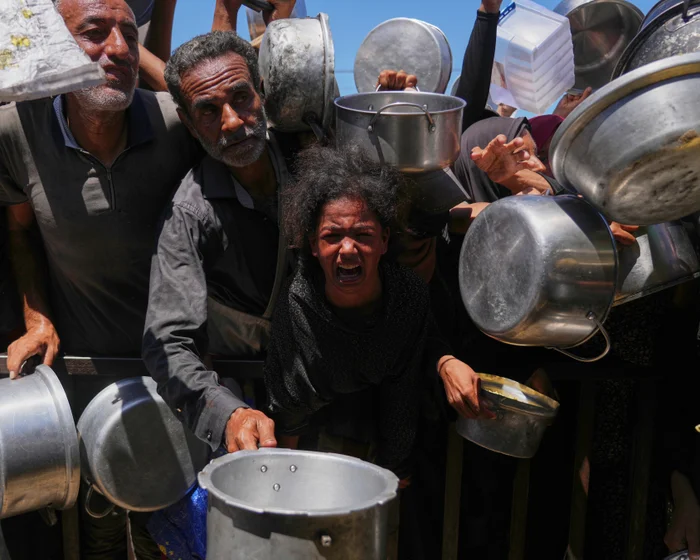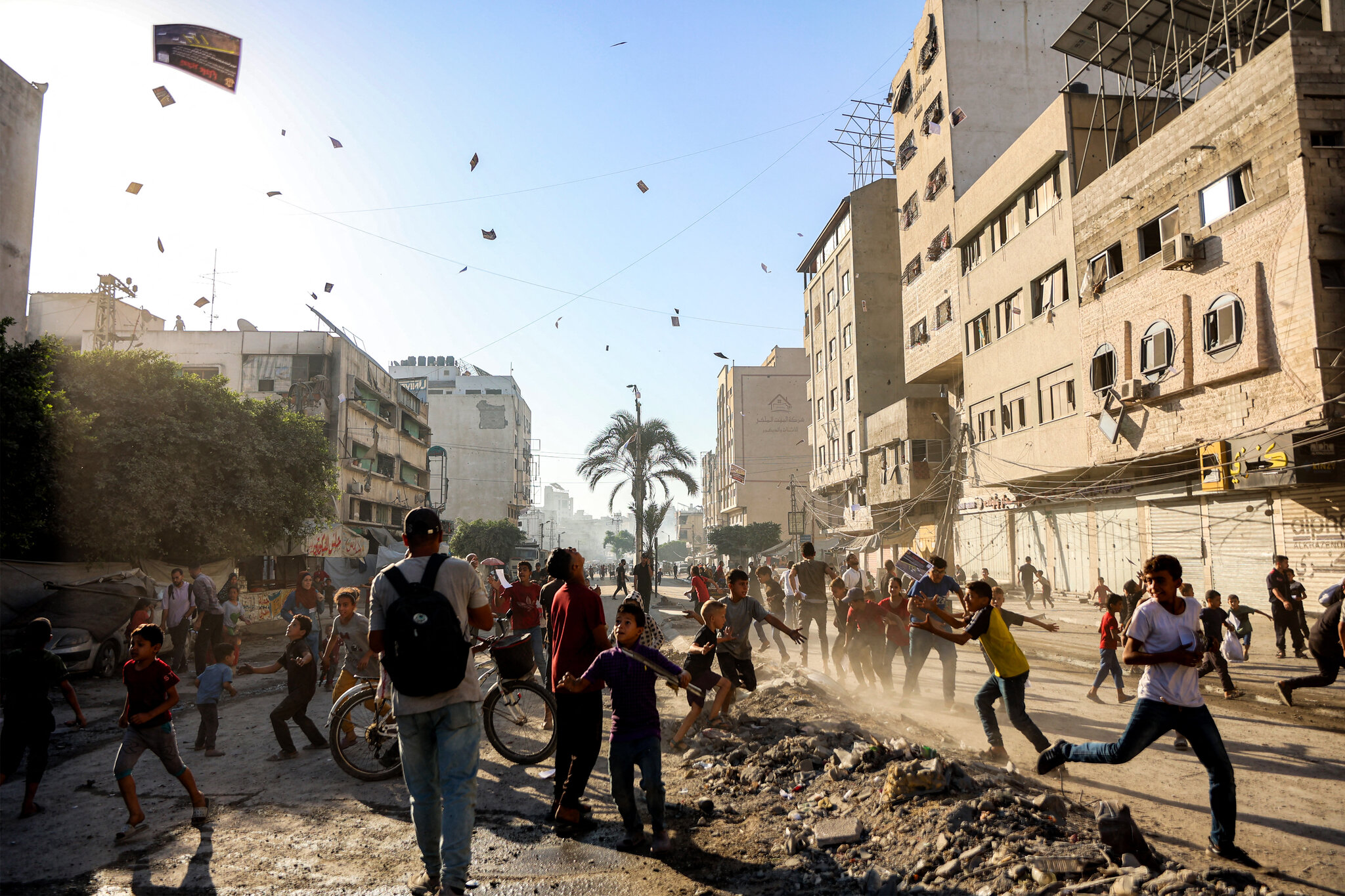On September 17, 2025, the United Nations sounded an urgent alarm over the worsening famine in northern Gaza, where food and fuel supplies are dwindling fast after Israel closed the region’s only aid crossing. With hundreds of thousands facing starvation, the crisis has reached a breaking point, described by UN officials as a “man-made disaster.” As someone who’s followed humanitarian crises with a heavy heart, I’ve seen how these warnings hit home—my cousin, a nurse, once worked in a conflict zone and shared stories of families scavenging for scraps. This article dives into the causes, impacts, and potential solutions to Gaza’s famine, blending hard facts with human stories to keep you engaged and informed.
The Famine Crisis in Northern Gaza
Northern Gaza, particularly Gaza City, is grappling with a famine officially declared by the UN-backed Integrated Food Security Phase Classification (IPC) in August 2025. The closure of the Zikim crossing has cut off vital supplies, leaving nearly a million people in dire straits.
A Man-Made Catastrophe
UN Secretary-General António Guterres called the famine a “failure of humanity,” driven by Israel’s blockade and military actions. With no aid entering since September 12, food stocks could run out in days.
Scale of the Crisis
The IPC reports that 514,000 people—nearly a quarter of Gaza’s population—are in IPC Phase 5, the highest level of food insecurity, marked by starvation and malnutrition. The crisis may spread south by October.
Why the Zikim Crossing Closure Matters
Israel’s decision to shut the Zikim crossing on September 12, 2025, has choked off northern Gaza’s last lifeline for humanitarian aid. This move has deepened an already catastrophic situation.
Impact of the Closure
No food or fuel has entered northern Gaza since the closure, halting aid convoys. The UN’s humanitarian office (OCHA) warns of “grave concerns” over stock depletion due to road congestion and insecurity.
Israel’s Stance
Israel claims it allows sufficient aid into Gaza, accusing Hamas of stealing supplies. Humanitarian groups deny this, stressing that restrictions and military actions are the primary barriers.
The Human Toll: Stories from the Ground
The famine isn’t just numbers—it’s families like 20-year-old Mosab al-Trtori’s, who shared a video diary with the BBC, showing his daily struggle to find lentils and onions for a meal. These stories hit hard, reminding us of the human faces behind the statistics.
A Personal Connection
My cousin, a nurse in a refugee camp years ago, described kids too weak to play because of hunger. “You see their eyes, and it haunts you,” she said. Gaza’s children face similar despair, with one in five acutely malnourished.
Daily Struggles
Mosab’s search for mujaddara ingredients—lentils, rice, onions—costs him hours and exorbitant prices, with a single garlic clove at $3, ten times its pre-war cost. Cash is scarce as banks and ATMs lie in ruins.
The Role of Israel’s Military Offensive
Israel’s intensified ground assault on Gaza City, launched on September 17, 2025, has worsened the crisis. Evacuation orders and airstrikes are pushing families south, where conditions are barely better.
Evacuation Challenges
The Israeli military opened a new evacuation route south, but nearly 500,000 people remain in Gaza City, unable to flee safely. Many say nowhere in Gaza is secure, with strikes hitting schools and shelters.
Impact on Infrastructure
Bombardments have destroyed food production, water systems, and healthcare, leaving community kitchens unable to function without fuel. The WHO reports 60 malnutrition-related deaths in July alone.
UN and Aid Agencies’ Response
The UN, alongside groups like Oxfam and UNICEF, is sounding the alarm, demanding immediate action to reopen aid routes and secure a ceasefire to avert mass starvation.
UN’s Urgent Plea
OCHA’s Jens Laerke warned, “We are on a descent into a massive famine.” The UN calls for 62,000 tons of aid monthly to meet basic needs, far more than the 1,800 trucks dispatched since May.
Aid Agencies’ Warnings
Oxfam’s Bushra Khalidi suggested the crossing closure might be a strategy to force civilians south, while the World Food Programme’s Abeer Etefa stressed the need for an open border point.
Timeline of the Gaza Famine Crisis
| Date | Event |
|---|---|
| March 2025 | Israel imposes total blockade, halting all aid to Gaza. |
| May 21, 2025 | Border crossings reopen, but aid remains insufficient. |
| August 22, 2025 | IPC confirms famine in Gaza City, projecting spread to south. |
| September 12, 2025 | Israel closes Zikim crossing, cutting off northern Gaza’s aid. |
| September 17, 2025 | UN warns of fuel and food depletion; Israel intensifies Gaza City assault. |
Source: Compiled from The Guardian, Reuters, and Al Jazeera.
The Broader Humanitarian Crisis
Beyond famine, Gaza faces collapsed healthcare, water shortages, and rampant disease. UNICEF reports children are “fighting for survival” amid trauma and starvation.
Healthcare Collapse
The only pediatric cancer hospital in northern Gaza is under bombardment, with gravely ill children caught in the crossfire. Medical Aid for Palestinians called the situation “unconscionable.”
Water and Sanitation
The WHO notes that destroyed water and sanitation systems exacerbate malnutrition, with families resorting to salty water for cooking, further weakening health.
Pros and Cons of Current Aid Strategies
Pros
- Airdrops Attempted: Israel’s airdrops in August aimed to deliver food, though criticized as ineffective.
- International Pressure: UN and NGO warnings are galvanizing global attention to push for action.
- Community Kitchens: Local efforts provide some hot meals, though limited by fuel shortages.
Cons
- Insufficient Aid: The UN says 600 trucks daily are needed, but only 300 enter, far below requirements.
- Safety Risks: Over 1,300 people have died seeking aid since May, often near militarized distribution sites.
- Blockade Restrictions: Israel’s controls limit ready-to-eat food, requiring scarce fuel and water for cooking.
Comparison: Northern vs. Southern Gaza Conditions
| Aspect | Northern Gaza | Southern Gaza |
|---|---|---|
| Famine Status | Confirmed famine, IPC Phase 5 | At risk of famine by October 2025 |
| Aid Access | No entry since Zikim closure | Limited aid via Khan Younis-Rafah |
| Population | ~500,000, half displaced | ~1.5 million in cramped tent camps |
| Infrastructure | Destroyed; no water, healthcare | Severely strained, limited services |
| Safety | Under heavy bombardment | Safer but still hit by strikes |
Source: Compiled from NPR, The New York Times, and UN News.
People Also Ask (PAA)
What is causing the famine in northern Gaza?
The famine stems from Israel’s blockade, the Zikim crossing closure, and military actions, which have cut off food, fuel, and water, worsened by destroyed infrastructure.
How many people are affected by the Gaza famine?
Over 514,000 people in northern Gaza face famine, with 1 in 3 households skipping meals for days. The crisis could affect 641,000 by October.
Why did Israel close the Zikim crossing?
Israel closed the crossing on September 12, 2025, amid a ground assault on Gaza City, citing security concerns and accusing Hamas of stealing aid.
Where can I find updates on the Gaza crisis?
Check UN News, World Food Programme, or Al Jazeera for reliable updates on Gaza’s humanitarian situation.
The Global Response: Calls for Action
The international community is rallying, with UN agencies, Oxfam, and Save the Children demanding an immediate ceasefire and unrestricted aid access to prevent further deaths.
UN’s Demands
UN officials like Tom Fletcher and Philippe Lazzarini have called for a ceasefire, hostage release, and open crossings to deliver 30,000 tons of food monthly.
NGO Advocacy
Save the Children labeled the famine “engineered,” accusing Israel of using starvation as a weapon. Oxfam warned of deliberate aid blockages driving the crisis.
Tools for Staying Informed
- UN News: Visit news.un.org for official updates on Gaza’s crisis.
- World Food Programme: Check wfp.org for food security reports.
- Humanitarian Donations: Support via unicef.org or oxfam.org.
A Glimmer of Hope Amid Despair
Despite the grim situation, stories of resilience emerge. UNICEF evacuated a young girl from northern Gaza for treatment, and she reunited with her family during a brief ceasefire. Such moments remind us that action can save lives.
The Cost of Inaction
Without intervention, the IPC projects famine spreading to Deir al-Balah and Khan Younis by October, potentially affecting 641,000 people. The WHO warns of rising disease alongside starvation.
FAQ Section
What is the famine situation in northern Gaza?
Famine was confirmed in Gaza City in August 2025, with 514,000 people facing starvation due to Israel’s blockade and the Zikim crossing closure.
Why is aid not reaching northern Gaza?
Israel’s closure of the Zikim crossing on September 12, 2025, and restrictions on aid, plus road insecurity, have halted deliveries.
How can I help people in Gaza?
Donate to trusted organizations like UNICEF or World Food Programme, or advocate for a ceasefire via social media.
What are the main challenges for aid delivery?
Insecurity, destroyed infrastructure, and Israel’s restrictions limit aid. Only 1,800 trucks have entered since May, far below the needed 62,000 tons monthly.
Is there hope for ending the famine?
A ceasefire and open crossings could deliver enough aid to halt famine, but urgent global action is needed to prevent further spread.
A Call to Action: Don’t Look Away
Gaza’s famine is a crisis we can’t ignore. The UN’s warnings, paired with stories like Mosab’s struggle for a single meal, demand our attention. It’s not just about numbers—it’s about kids too weak to stand, families fleeing with nothing but hope. Share this article, donate to WFP, or urge leaders for a ceasefire. Every step counts in turning this “man-made disaster” into a story of recovery. Let’s act before it’s too late.




